In today’s digital marketing landscape, businesses must choose between two powerful strategies: SEO (Search Engine Optimization) and Paid Advertising (PPC – Pay-Per-Click). While SEO offers long-term organic growth, paid advertising provides immediate visibility and fast results. Finding the right balance between SEO and PPC is key to maximizing ROI and sustaining business growth.
At VP Marketing, we specialize in crafting integrated SEO and paid advertising strategies to help businesses achieve short-term wins while building long-term brand equity. This blog explores the differences between SEO and paid advertising and how VP Marketing optimizes both for maximum return on investment.
1. Understanding SEO vs. Paid Advertising
Why It Matters:
- SEO builds organic traffic over time, leading to long-term growth and credibility.
- Paid ads generate immediate traffic, making them great for promotions and product launches.
- The best strategy combines both approaches for maximum effectiveness.
How VP Marketing Helps:
- Conducting in-depth SEO audits to improve organic visibility.
- Running highly targeted PPC campaigns for instant conversions.
- Integrating data-driven strategies to optimize both organic and paid efforts.
2. The Benefits of SEO for Sustainable Growth
Why It Matters:
- 75% of users never scroll past the first page of Google search results.
- Organic traffic from SEO has a higher trust factor and long-term value.
- SEO leads are 8x more likely to convert than outbound marketing leads.
How VP Marketing Helps:
- Implementing on-page SEO, including optimized content and metadata.
- Building high-quality backlinks to improve domain authority.
- Optimizing websites for mobile-first indexing and Core Web Vitals.
3. The Power of Paid Advertising for Immediate Results
Why It Matters:
- PPC generates 50% more conversions than organic search.
- Retargeting ads help re-engage lost visitors, increasing ROI.
- Paid ads allow precise audience targeting based on demographics and behavior.
How VP Marketing Helps:
- Running Google Ads, Facebook Ads, and LinkedIn Ads for targeted reach.
- Implementing A/B testing to refine ad creatives and messaging.
- Using AI-powered bidding strategies to lower cost per acquisition (CPA).
4. Cost Considerations: SEO vs. PPC
Why It Matters:
- SEO requires time and consistent effort, but provides long-term, cost-effective traffic.
- PPC requires continuous ad spend, making it effective for immediate ROI.
- Businesses need a strategy that balances cost-efficiency with performance.
How VP Marketing Helps:
- Creating custom budget plans to allocate resources effectively between SEO and PPC.
- Monitoring return on ad spend (ROAS) to ensure cost-effective campaigns.
- Scaling organic efforts while using PPC for high-intent lead generation.
5. Keyword Strategy: Organic vs. Paid Search
Why It Matters:
- Organic keywords drive sustained rankings and credibility.
- Paid search allows businesses to rank instantly for competitive terms.
- The right keyword strategy ensures higher conversions at a lower cost.
How VP Marketing Helps:
- Conducting extensive keyword research for both SEO and PPC.
- Targeting high-intent, long-tail keywords for organic ranking.
- Running PPC campaigns on competitive, high-converting keywords.
6. How to Integrate SEO and Paid Advertising for Maximum ROI
Why It Matters:
- Businesses that combine SEO and PPC experience better lead generation.
- PPC data can provide insights into which keywords convert best organically.
- SEO can reduce dependency on long-term PPC spending.
How VP Marketing Helps:
- Using PPC data to inform SEO strategies and vice versa.
- Running remarketing campaigns to capture organic visitors.
- Measuring performance data across both organic and paid channels.
7. Measuring Success: SEO Metrics vs. PPC Analytics
Why It Matters:
- SEO success is measured by rankings, organic traffic, and engagement.
- PPC success is determined by CTR, conversions, and ad ROI.
- Tracking both ensures data-driven decision-making.
How VP Marketing Helps:
- Using Google Analytics, Google Search Console, and PPC dashboards to monitor performance.
- Adjusting strategies based on real-time data and conversion tracking.
- Providing customized reports for continuous optimization.
8. Local SEO vs. Local PPC: Which is Better?
Why It Matters:
- Local businesses need both SEO and PPC to capture nearby customers.
- Google’s Local Pack prioritizes businesses with strong SEO and paid visibility.
- Location-based ads increase foot traffic and calls to businesses.
How VP Marketing Helps:
- Optimizing Google Business Profile listings for local SEO rankings.
- Running geo-targeted PPC ads to drive immediate local traffic.
- Using local keyword strategies to improve organic and paid visibility.
9. The Future of SEO and Paid Advertising
Why It Matters:
- AI and automation are reshaping both SEO and PPC strategies.
- Voice search and AI-powered assistants impact organic search rankings.
- Paid ads on emerging platforms like TikTok and YouTube Shorts are gaining traction.
How VP Marketing Helps:
- Staying ahead of Google algorithm updates and AI-driven ad targeting.
- Optimizing for voice search, zero-click searches, and conversational AI.
- Implementing automated bidding strategies for smarter PPC campaigns.
10. Finding the Right Balance for Your Business
Why It Matters:
- Every business has unique needs—some may benefit more from SEO, others from PPC.
- A data-driven approach ensures the best allocation of resources.
- Testing and adaptation are key to long-term success.
How VP Marketing Helps:
- Creating customized marketing plans tailored to business objectives.
- Running parallel SEO and PPC campaigns for maximum exposure.
- Continuously analyzing and refining strategies for optimal performance.
